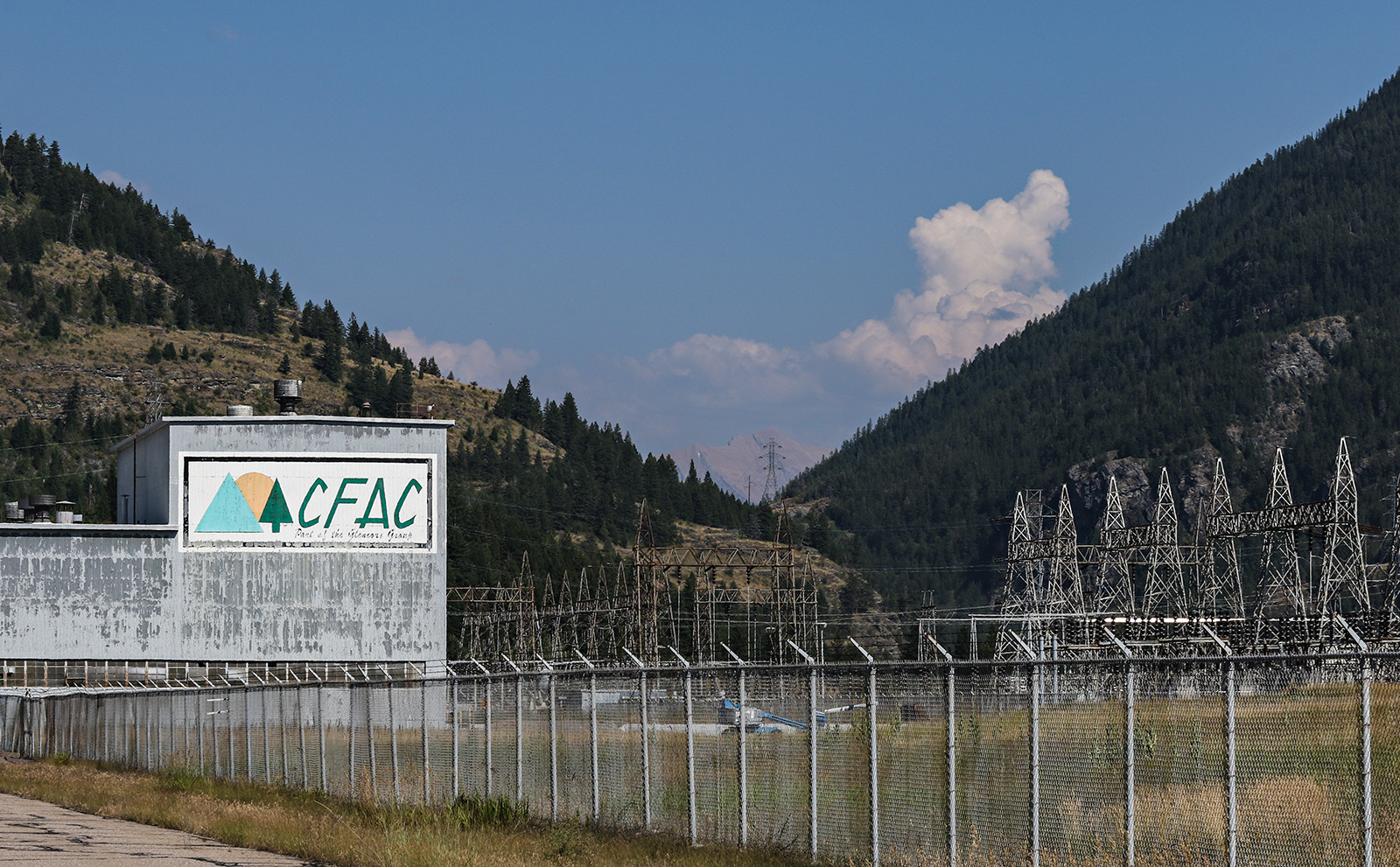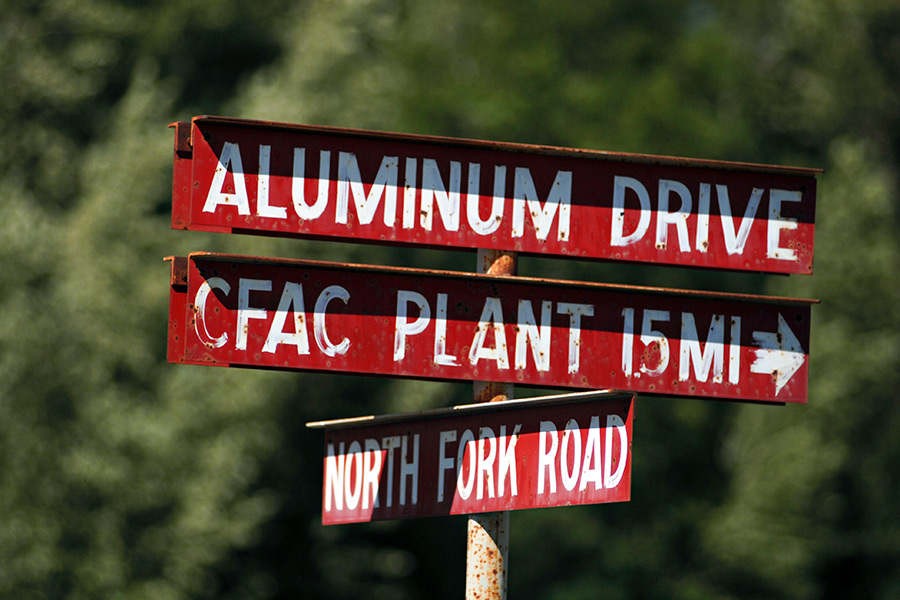Superfund Expert Reviews CFAC Cleanup Plan ‘As If This Were My Own Backyard’
As the U.S. Environmental Protection Agency seeks public comment on a proposed remediation plan at the former aluminum plant, residents receive technical advice from community liaison
By Tristan Scott
As residents try to make sense of a complex proposal to clean up the Columbia Falls Aluminum Company Superfund site in their backyard, the U.S. Environmental Protection Agency has enlisted an independent technical advisor to help give community members a voice, both to express their concerns and to ask informed questions leading up to an Aug. 31 public comment deadline.
“That’s my job — to look at this plan through your eyes, as if this were my own backyard, but with my technical background,” said Karmen King of Skeo, an environmental consulting firm that specializes in advising communities on federal cleanup plans. “But your institutional knowledge of this community is going to be imperative.”
In addition to her 33 years of experience assessing ecological risks as an aquatic toxicologist, King has lived near two Superfund sites while ushering them from beginning to completion — the Bonita Peak Mining District Superfund Site in Silverton, Colo., and the California Gulch Superfund Site in Leadville, Colo.
“I honestly do know what it’s like to live with a Superfund site in my backyard,” King said. “I know what it is like to sit in your chairs and feel helpless, like things are out of control and confusing and decisions are being made in another language. I am supposed to be a bridge to help span that gap between science and engineering and the community at large.”
King’s arrival on the doorstep of the Columbia Falls Aluminum Company (CFAC) Superfund Site came at the behest of federal regulators with the U.S. Environmental Protection Agency (EPA), which in 2007 launched the Technical Assistance Services for Communities (TASC) program to ensure locals living near a proposed federal cleanup site have the resources to participate “as informed partners in environmental discussions, problem solving and decision-making,” according to EPA.
That’s become especially important to residents of Columbia Falls since last month, when after years of environmental analysis, sampling and monitoring, EPA released its proposed cleanup plan for the contaminated site along the Flathead River. The plan describes a multi-phase, $57.5 million project and entails treating soil contamination and constructing a slurry wall around landfills containing toxic hazards to keep chemicals like cyanide and fluoride from running into nearby waterways.
Declared a Superfund site in 2016, the former CFAC site — and the government’s plan to remediate it — has been a prominent source of apprehension, bewilderment and skepticism for a community that once depended on the smelter plant as a regional economic driver. Confusion surrounding the proposed plan’s procedural details has already led to the 30-day extension of a public comment deadline that now runs until Aug. 31, and it prompted the EPA to fold King into the process as a TASC Technical Advisor to the community.
At a recent town hall meeting, King clicked through a slideshow presentation of prospective comments to the plan that she discerned based on her technical understanding of the proposed cleanup plan, but which she interpreted through the lens of a concerned community member.
“You all have a voice in this process, but in order to express that voice we have to follow procedure,” King told a dozen residents gathered at the Columbia Falls City Council chambers on July 12. “We need to take your voice and put it down on paper and give it to the EPA to help them understand this story from a community perspective. Each Superfund site is a complicated puzzle with pieces to untangle, and your intimate understanding of this community can help us figure out that puzzle.”

One member of the community with an intimate knowledge of the CFAC puzzle is Steve Wright, the company’s former general manager and environmental engineer, who during last week’s meeting explained why the proposed cleanup plan includes building a containment wall around the site’s large west landfill, but not its smaller center landfill, which is not believed to be a source of groundwater contamination and was capped in the 70s or 80s with locally sourced clay to prevent its contents from leaching.
For King, Wright’s comment captured the essence of how informed public comments can be a guiding star for federal regulators.
“This is what is assuring about this process. There are a lot of eyes on it,” King said. “Trust me, on these complicated Superfund sites there is no arbitrary decision. These are engineered remedies and there is a basis for their selection. EPA and the state don’t want to be here forever, they want to achieve success.”
According to a timeline included in the proposed plan, the cleanup project’s design is anticipated to take six to 12 months, while construction of the project, including the slurry wall, monitoring wells, on-site repository, groundwater treatment technologies, and fencing will span one to two construction seasons. Maintenance of the site would be ongoing and environmental reviews would be set every five years.
Located two miles northeast of Columbia Falls on the Flathead River, the CFAC site was once home to an aluminum reduction facility. The primary contaminants of concern are fluoride, cyanide and various metals. EPA’s proposed plan describes the actions the federal government deems necessary to protect human health and the environment from contaminants present in landfills, surface water and groundwater at the site.
From its famous opening in 1955 through the boom years of the 1960s and ’70s, the facility fueled this rural corner of Montana with over 1,500 jobs — almost half the population of Columbia Falls in those days — and millions of dollars in new economic investment. The plant closed in 2009, putting hundreds of employees out of work. The EPA declared it a Superfund site in 2016.
According to King, who said she’s worked on 100 Superfund sites, the CFAC property ranks “average” in its complexity and severity.
“We have created some big messes in this country, and having worked on 100 sites I have lots of good stories,” King said. “But it’s only a good story once we finally get to the finish line. So let’s make this a good story.”
Written comments can also be sent by email to Missy Haniewicz at [email protected] or by standard mail to Missy Haniewicz, U.S. EPA, 1595 Wynkoop Street, Denver, Colorado, 80202.
The proposed plan, associated documents and information on how to submit comments can be found at the Columbia Falls Superfund site webpage.